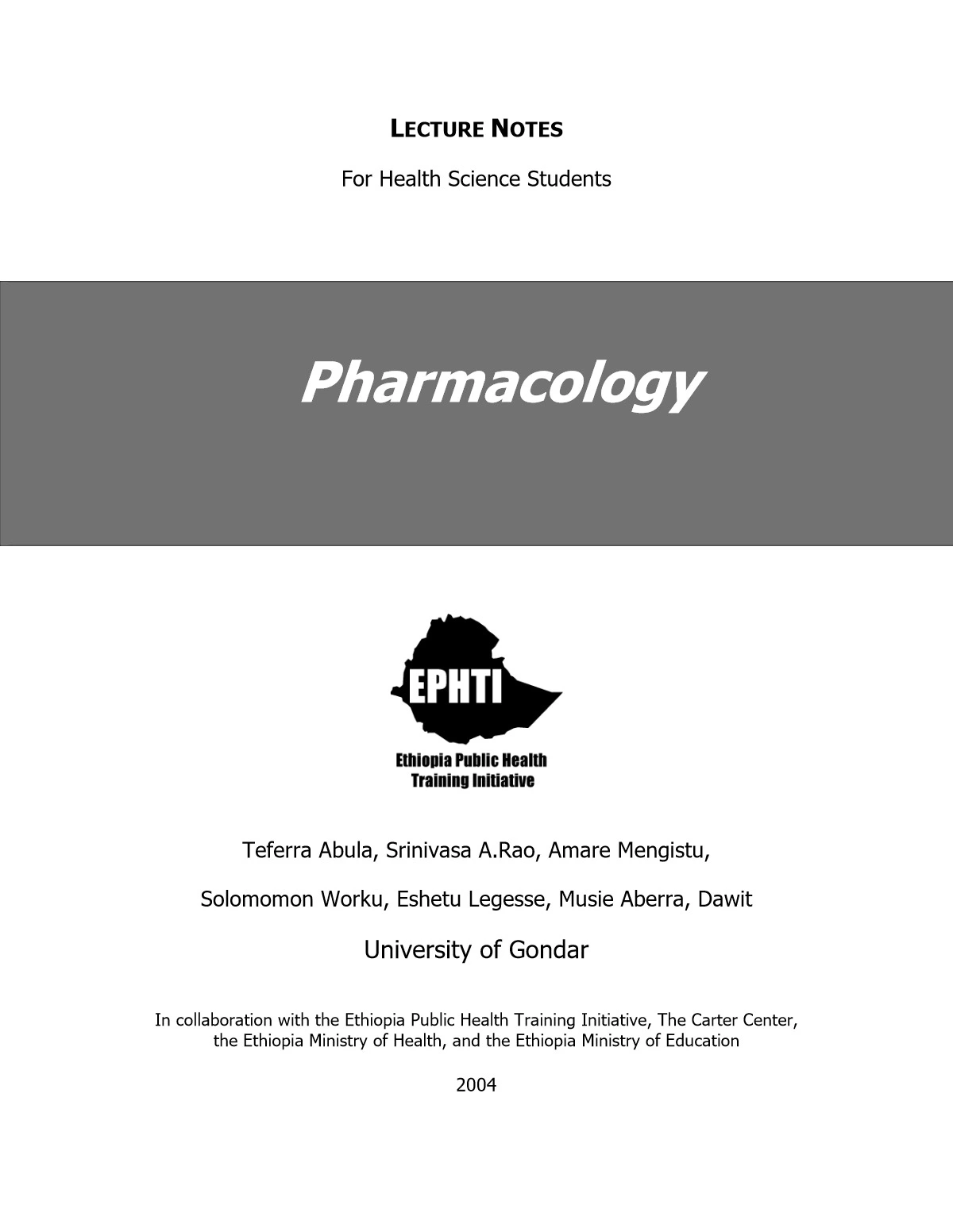
Pharmacology Book
Pharmacology is the scientific study of the effects of drugs and chemicals on living organisms where a drug can be broadly defined as any chemical substance, natural or synthetic, that affects a biological system.
General Pharmacology consists of two fields of interest, pharmacodynamics and pharmacokinetics. The most important concept in pharmacodynamics is the dose-response relationship, which describes the dependence of the effect of a drug from its concentration at its receptor.
Pharmacology Notes for Medical Students
- Introduction to Pharmacology:
- Pharmacology is the study of how drugs interact with living organisms to produce therapeutic effects or adverse reactions.
- Understanding pharmacology is essential for medical practice as it enables proper drug selection, dosing, and monitoring for patients.
- Drug Classification:
- Drugs can be classified based on their chemical structure, mechanism of action, therapeutic use, and route of administration.
- Common drug classes include antibiotics, antivirals, analgesics, anti-inflammatory drugs, antihypertensives, antidepressants, antipsychotics, and anxiolytics.
- Drug Receptor Interactions:
- Many drugs exert their effects by binding to specific receptors in the body.
- Receptors can be located on cell surfaces (e.g., G protein-coupled receptors) or within cells (e.g., nuclear receptors).
- Drug-receptor interactions can lead to activation or inhibition of cellular signaling pathways, resulting in pharmacological effects.
- Pharmacokinetics:
- Pharmacokinetics describes the absorption, distribution, metabolism, and excretion of drugs in the body.
- Key pharmacokinetic parameters include bioavailability, volume of distribution, half-life, and clearance.
- Understanding pharmacokinetics helps predict drug concentrations in the body and optimize dosing regimens.
- Pharmacodynamics:
- Pharmacodynamics refers to the study of the biochemical and physiological effects of drugs on the body.
- Drug potency, efficacy, and mechanism of action are important pharmacodynamic considerations.
- Adverse drug reactions (ADRs) can occur due to unintended pharmacodynamic effects.
- Clinical Application:
- Medical students should understand the clinical indications, contraindications, and side effects of commonly prescribed drugs.
- They should also learn to interpret drug interactions and appropriately adjust drug therapy based on patient characteristics and clinical status.
- Special Considerations:
- Pharmacology in special populations such as pediatric, geriatric, pregnant, and breastfeeding patients requires additional considerations due to physiological differences and potential risks.
- Drug dosing adjustments may be necessary to ensure safety and efficacy in these populations.
- Drug Development and Regulation:
- Medical students should be familiar with the drug development process, including preclinical testing, clinical trials, regulatory approval, and post-marketing surveillance.
- Understanding drug regulation ensures that physicians prescribe medications that have undergone rigorous evaluation for safety and efficacy.
- Pharmacogenomics:
- Pharmacogenomics explores how genetic variations influence drug response.
- Knowledge of pharmacogenomics enables personalized medicine approaches, where drug therapy is tailored to an individual’s genetic makeup.
- Continuing Education:
- Pharmacology is a dynamic field with constant advancements and updates.
- Medical students should continue to stay updated with new drugs, treatment guidelines, and evidence-based practices throughout their careers.